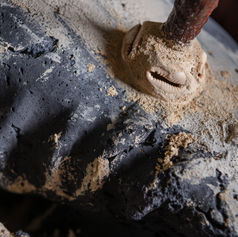top of page
CORPORAL RENEWAL | SITES OF MEMORY | HISTORY IN THE MAKING
Jupiter's Song

The exhibition Jupiter's Song ran from 15 July - 20 October 2022 at the International Slavery Museum in Liverpool. It featured an installation, honouring the unnamed people that were enslaved and lost their lives on the slave ship owned by the Earle family, the Unity c. 1770.
Khaleb Brooks conducted a year long research residency at the International Slavery Museum identifying ways to make archives accessible to public audiences. They focused this research on the Middle Passage, where personal narratives and the lives lost were the most difficult to capture.
bottom of page







